Synthetic Turf, Real Risks
Caught up in the county-wide fervor to play sports on synthetic rubber, the AHS community has rallied to implement a new turf field. However, before we plunge face first into the rubber pellets, the health risks associated with synthetic rubber should at least be acknowledged.
Numerous turf field funding initiatives have been set up throughout AHS, including the “Turf Challenge” that challenges each class to raise a certain amount of money, a challenge to each of the teachers to donate $100 and an overall request of support from the community.
As of Nov. 5, the Annandale Turf campaign has raised slightly over $33,000.
It’s easy to see the apparent benefits of turf fields – increased playing time, lower maintenance costs and there would be no need to travel to nearby turf fields for practice. Many have argued that the turf fields will save both AHS and FCPS a lot of money in the long run.
“The biggest benefit for turf fields is we won’t have to worry about postponing games because of field conditions. We’ll be able to play games in the rain. It’s a difficult decision when you get a lot of rain to say ‘okay, do I want to play the game and worry about tearing up the field for future games in the fall or in the spring?’” Director of Student Activities Karl Kerns said. “Because it costs us about $40,000 every year to maintain our three Bermuda Grass fields. That includes the mowing, the field maintenance, the paint that we have to put on the field to line the field for football, field hockey, baseball. When we have soccer and lacrosse we have to paint those lines each time. When you have turf field, you don’t have to worry about any cancellations, we don’t have to mow the field every single day.”
It is undeniable that there would be lower monetary costs, but what environmental and health risks are we willing to pay for lower financial costs? Studies have found the presence of many compounds that are threatening to human health.
Rubber quality
The rubber used in turf field pellets (also called “tire crumbs”) is not approved by the U.S government to be dumped in oceans or landfills, according to the Environment and Human Health Incorporation’s (EHHI) toxicology report about synthetic turf fields.
The report says that only 40 percent of tires are rubber, and that the rest is “carbon black, aromatic oils, sulfur and various metals.”
EHHI’s report states that some of the rubber in synthetic turf fields comes from waste rubber tires, which contain a variety of hazardous chemicals. Synthetic turf fields is not wholly comprised of waste rubber, but the amount of waste rubber in each mixture of turf is unknown.
The EHHI report discusses a multitude of health issues among Taiwanese rubber workers at a scrap tire shredding factory, where tire crumbs are ostensibly derived. Workers have a host of health issues, including acute and chronic respiratory effects and an increased case of laryngeal, skin and bladder cancers due to repeated and prolonged exposure to the particulates released by the processes at the factory.
The particulates analyzed in samples of air collected at the Taiwanese factory included quinoline, amides and benzothiazole (BZT). BZT is a chemical that is considered a “respiratory irritant” by a 2011 report done by the Connecticut Department of Public Health.
While it could be argued that BZT is associated with the rubber-making process, people who use turf fields should be cognizant of the potential for respiratory issues.
Further research should be conducted on the issue of particles such as BZT if they are involved in the production of the rubber crumbs that are intended for the use of high school students.
Effects of prolonged exposure
The tire crumbs contain volatile organic hydrocarbons (VOCs). VOCs are chemicals with carcinogenic potential that are found in paint, aerosols and nail polish. It should be noted that VOCs are not harmful in isolation. However, increased exposure to the VOCs is known to adversely affect the liver, nervous system and potentially cause cancer.
Student athletes who play on turf fields for extended periods of time face increased exposure to the chemicals. They will repeatedly breathe heavily at two or three hour practices for three to six days a week, and inhale all compounds released into the air by the rubber pellets.
Environmental hazards
There is no denying that turf fields lack the environmental benefits that natural grass fields provide the ecosystem. Synthetic turf offers minimal opportunities for filtration that grass provides.
“The drainage in synthetic goes straight through. On a grass field, it drains off to the side, and we have four drains on our field. On a grass field it drains into the soil but there’s a sub-draining system in the synthetic turf fields.” Kerns said about the drainage. “[The water] goes into the watershed. Right now we have to put chemicals down to keep our fields. So those chemicals go into the Chesapeake. With Chesapeake, the studies show you have less pesticides, all those herbicides, everything else that goes into the Chesapeake.”
However, Kerns points the critics of turf fields to the Fairfax County Turf Task Force website for risk assessment of the synthetic turf.
“All of the figures, everything is in there,” Kerns said. “The county, the park authority – if it were dangerous, or they felt it was a risk to the environment, we wouldn’t already have 20 fields in schools and the county wouldn’t put these fields in as well.”
However, IB Environmental Systems and Society (ESS) teacher Caroline Gergel has a different perspective about the benefits of the grass field vs. the synthetic turf.
“You lose all the ecosystem functions that grass provides,” Gergel said. “It helps fix nitrogen in soil, it makes food for other organisms in the food web, not necessarily humans but other things. It’s involved in symbiotic relationships with nitrogen-fixing bacteria, nematodes and all kinds of soil organisms that are intrinsic to a living soil.”
That being said, synthetic turf seems to be the perfect solution to all of athletes’ problems with grass fields: statistics report a lower amount of injuries, practice and games don’t have to be cancelled because of inclement weather and – added benefit – they cost the county much less money.
All of those benefits are solely for short-term human gain, not for the well-being of the environment.
“What’s the environmental cost of cleaning up the landfill because these things are toxic – they’re going to make waste that is permanently on this earth,” Gergel said. “What’s the cost of that over time?”

This is Christine Tamir's fourth year on the staff of The A-Blast. She is one of the two Editorials editorials for this school year. Besides the newspaper,...

Rahel Tecle is a senior and has been apart of A-Blast for 3 years now. She is the head videographer. She is a member of Leadership and is on the SGA executive...



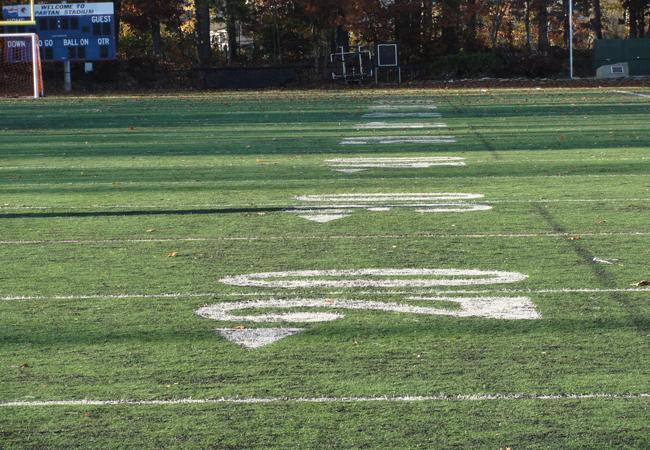
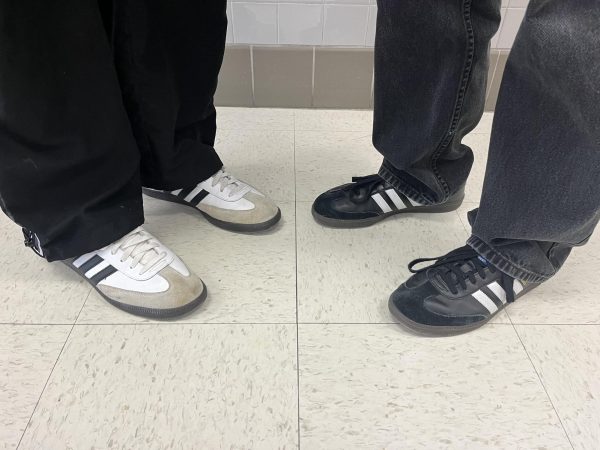

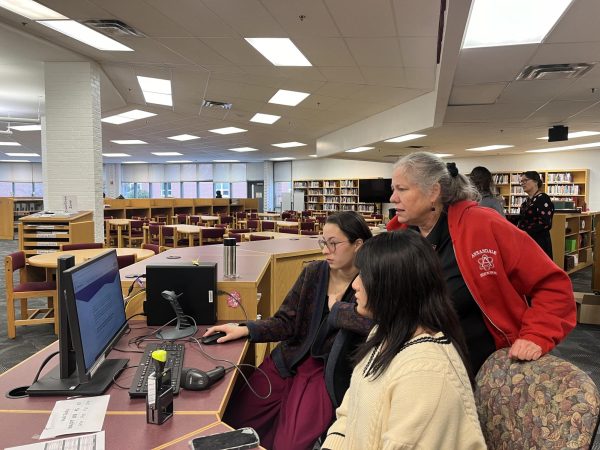

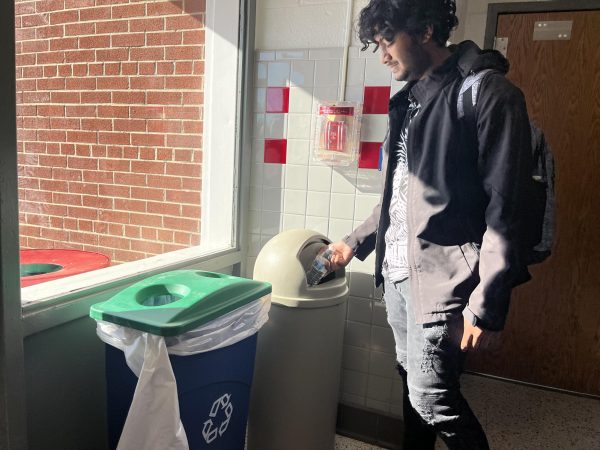

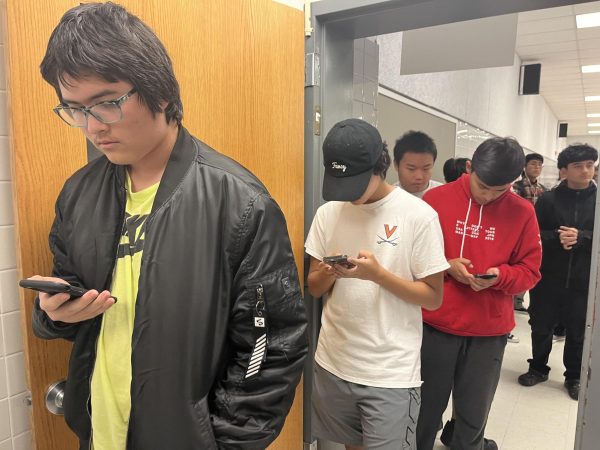

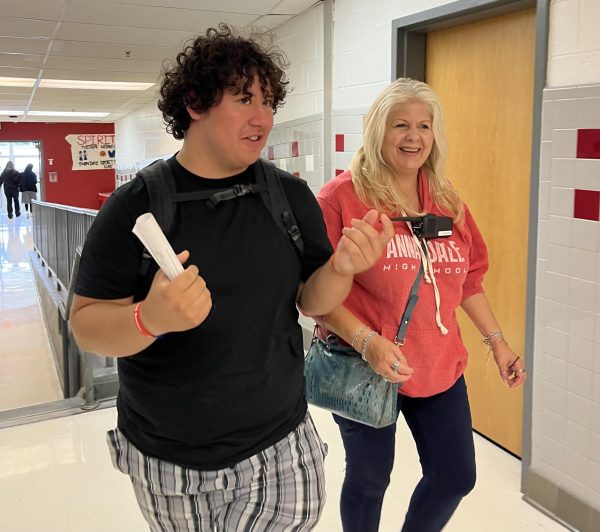

dfsdyhs suttr • Dec 12, 2013 at 7:14 pm
What a bunch of idiots you all are!!!! How could you delete my previous comment. You state “speak your mind” and I did candidly. I think you meant simply regurgitate the propagated fallacies spewed out by the mainstream media, big government, and an oppressive state sponsored educational system. Annandale high school, Fairfax county, other government sponsored censorship programs are trying there best to educate children to neither question nor investigate the unconstitutional institutions that have risen around them. You should all be ashamed! Our founding fathers never intended to create a department of education that provides the American children with a watered down learning system filled with propaganda that serves to solely satisfy a malevolent government agenda. Just listen to what John D Rockefeller and Fredrick T. Gates, the founders of the general education board and the subsequent mandatory public school educational system have to say about public education in America: “I don’t want a nation of thinkers, I want a nation of workers.” – John D Rockefeller. “In our dream we have limitless resources, and the people yield themselves with perfect docility to our molding hand. The present educational conventions fade from our minds; and, unhampered by tradition, we work our own good will upon a grateful and responsive rural folk. We shall not try to make these people or any of their children into philosophers or men of learning or of science. We are not to raise up among them authors, orators, poets, or men of letters. We shall not search for embryo great artists, painters, musicians. Nor will we cherish even the humbler ambition to raise up from among them lawyers, doctors, preachers, statesmen, of whom we now have ample supply.” – Frederick T Gates. You are all just slaves to the system.
K • Dec 11, 2013 at 6:26 pm
“All of those benefits are solely for short-term human gain, not for the well-being of the environment.”
Again, an action without foresight that is incidentally more permanent and devastating than cooperative efforts for sustainability that may be expensive at the beginning, but priceless in the end.
Excellent writing, Christine.
nqerwejng-r • Dec 6, 2013 at 9:48 am
What an idiotic post. CITATIONS, CITATIONS, CITATIONS! People wake up and realize that nobody has the time in life to cite every statement or action they take in life. There is no such thing as unbiased information these days and that includes government and educational sources. Every info source is pushing an agenda and sometimes you have to observe a situation independently. There are many issues with a conventional grass field including inconsistent plant growth, large amounts of water needed, and the possibility of inconsistent ground surfaces (a danger to students). Additionally, turf fields are used by the NFL, FIFA, and USACA. These are multi-billion dollar organizations that offer sport programs at the highest level. What can you discern from this you ask? You bring up possible health concerns with VOCs having the possibility of causing cancer. Are you serious?? Cancer is the combination of rapid cell growth and lack of apoptosis (some cells have to die at some point but continue to live and replicate) caused by damage to genetic material inside the nucleus of a cell as a result of carcinogens. Everyone has cancer at some point because at one point or another cells or another but the immune system tends to destroy these malfunctioning cells before what we really mean when we say “cancer”. Every aspect of our modern society contains or produces carcinogenic materials that could “potentially” lead to cancer or harm us in some other way. Everything from the cars we drive, to the tap water we drink, and the processed food we eat at school. Speaking of processed food… Why isn’t that a topic of conversation for you to write or discuss? After all the artificial preservatives, growth hormone induced animals, and unhealthy options in the vending machines offered in the cafeteria could all “potentially” cause cancer and lead to a higher risk of heart disease, diabetes, and high blood pressure down the road. At the end of the day implementing turf will not cause cancer or pose serious health risks to young, fit, and overall healthy adolescents. It is no more unhealthy than walking down the side walk while cars releasing emissions that could also “potentially” cause cancer. At the end of the day there is no real way to prevent exposure to carcinogens in this modern world and the only “cure” for cancer right now is a strong immune system that will root out the cancerous cells early- something that must people are kept in the dark about because chemotherapy and other treatments are costly, making companies very profitable.
Good day,
a fellow atom ’17
P.S~ I’m not going to cite anything!
Walt Sanders • Nov 21, 2013 at 5:48 pm
November 21, 2013
Rebuttal Article to A-Blast Newspaper
I am writing in response to a recent article published by Christine Tamir entitled “Synthetic Turf: The Real Risks.”
By way of background, I am the Washington, DC counsel for the Synthetic Turf Council, representing the many facets of the synthetic turf industry. I am aware that a number of local high schools, middle schools, elementary schools and parks have decided to replace their natural turf fields with synthetic turf because it more cost-effective and versatile. A number of recent articles and blog posts have asserted that synthetic turf presents a health threat to those who play on these fields.
Nothing could be further from the truth.
Synthetic turf is recognized by school and parks officials, the NFL, World Cup soccer, and sports and recreation leagues around the world to provide a consistent and safe playing surface year-round, when high usage, climatic conditions, and other factors make it impossible to maintain a lush, safe grass sports field. And, according to the Synthetic Turf Council, because it saves billions of gallons of water, eliminates the use of pesticides and fertilizers, and looks fabulous for many years; synthetic grass is in high demand for landscape and recreation use.
Numerous independent studies validate the human health and environmental safety of synthetic turf and crumb rubber infill, including the U.S. EPA, Consumer Product Safety Commission, and EHHI’s home state of Connecticut. The studies are posted in their entirety on the Synthetic Turf Council’s website, http://www.syntheticturfcouncil.org, under Resource Center/Independent Research.
Walt A. Sanders, Esq.
Vice President Law & Government Affairs
Van Fleet Associates, Inc.
1800 Diagonal Road, Suite 600
Alexandria, VA 22314
(703)647-7504
Chris Kirkwood • Nov 19, 2013 at 2:45 pm
Ms. Tamir,
I enjoyed reading your article, it was well written and informative. You presented both sides of the issue with the from the dispassionate view of an experienced reporter.
Well done.
Sincerely,
Chris Kirkwood
AHS, class of 1977
AHS Supporter • Nov 17, 2013 at 7:10 pm
Congratulations, Ms. Tamir, on an excellent and sadly necessary editorial.
Ms. Tamir notes that the county’s justification for installing artificial turf is financial, and the ecological and health impacts have been pushed aside. More details can be found in the FCPS Synthetic Turf Task Force Overview at:
http://www.fairfaxcounty.gov/ncs/pdfs/turf_rpt.pdf
The FCPS Synthetic Turf Task Force finds that “the total annual operating cost of a synthetic turf field, including maintenance and utility costs, is comparable to a lighted and irrigated natural grass field” (see link above, p. 29). This implies (contrary to Ms. Tamir’s interview with Mr. Kerns) that the savings are not certain, and are modest at best. Even worse, the Task Force does not reference their sources. For a multi-million dollar project, I would hope they have reliable sources they are willing to report to the public. Freshman science fair projects require more citations than the Synthetic Turf Task Force provides.
The ecological and health impacts become obvious when you consider that the field is composed of “crumb rubber infill” (link above, p. 38), i.e. the crushed remains of old car tires. The Synthetic Turf Task Force itself admits that dangerous chemicals can be ingested by “not washing hands before eating after playing on the fields,” “breathing in dust and vapors while playing on the fields,” and “contact with the crumb rubber” (p. 39). The concept of an atheletic field toxic enough that you must not ingest its dust should raise red flags for anyone who cares about the well-being of Annandale’s students.
The Synthetic Turf Task Force presents no serious discussion on the issues of excessive heat, bacterial infections, environmental impact, or even implications for student injury rates. Given the vast financial investment of these fields, I had hoped FCPS would provide better justification.
FCPS strives to encourage critical thinking, and clearly Ms. Tamir has learned this lesson. I hope the Annandale HS administrators will learn from Ms. Tamir’s example and expend equal brainpower before they let in this toxic Trojan horse.